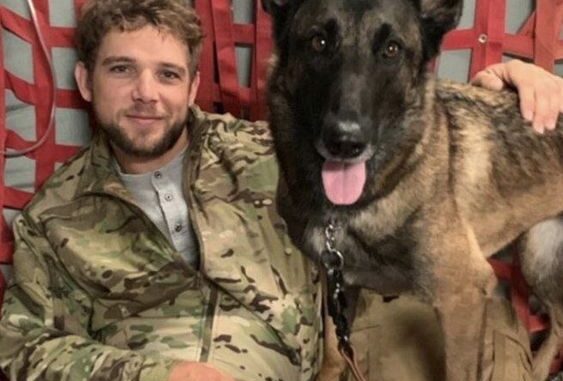
In the shadows of the world’s most intense and dangerous missions, few groups have achieved the mythical status of “Task Team 6,” an elite force often portrayed as the “bad guys” in the fight against high-level threats to global security. Task Team 6 is a nickname popularly attributed to the renowned SEAL Team 6, the legendary United States Navy SEAL team that successfully took down Osama bin Laden, one of the world’s most infamous terrorists. Here’s a look at their journey, the mission, and what made them the perfect team to eliminate the leader of al-Qaeda.
The Rise of SEAL Team 6
SEAL Team 6, also known as the Naval Special Warfare Development Group (DEVGRU), is one of the United States’ most highly trained and specialized units. Formed in the aftermath of the 1980 failed Iranian hostage rescue mission, it was designed to be America’s elite counterterrorism unit, capable of conducting the most covert and complex missions worldwide. Over the years, SEAL Team 6 grew in strength and expertise, developing highly sophisticated training programs, weaponry, and tactics to tackle any threat.
Their missions often take place in some of the most volatile areas on the globe, involving high-stakes hostage rescues, covert reconnaissance, and the elimination of high-value targets. Each member is selected from the U.S. Navy SEALs, and only those who complete the rigorous training and psychological tests are admitted to SEAL Team 6.
The Road to May 2, 2011: Hunting Down Bin Laden
After the September 11, 2001, attacks, the United States made it a priority to capture or kill Osama bin Laden, the mastermind behind the devastating terror attacks. However, bin Laden managed to evade capture for nearly a decade, hiding in remote areas and maintaining strict operational secrecy. Numerous intelligence agencies, including the CIA, worked tirelessly to locate him, and their persistent efforts eventually led to a compound in Abbottabad, Pakistan, in 2010.
By early 2011, U.S. intelligence officials were confident that bin Laden was hiding within the high-walled, heavily fortified compound in Abbottabad. The decision was made to proceed with a high-risk mission to either capture or kill the al-Qaeda leader. The operation, codenamed Operation Neptune Spear, was designed to be one of the most secretive, dangerous, and pivotal missions of modern times.
The Mission to Kill Osama Bin Laden
On May 2, 2011, the elite members of SEAL Team 6 embarked on a stealthy, night-time raid in Pakistan. They were flown in on two modified Black Hawk helicopters to reduce noise and minimize radar detection, intending to surprise and capture or kill bin Laden with minimal collateral damage. As the team landed and breached the compound, they moved quickly through the heavily guarded building.
It was within this compound that SEAL Team 6 executed a mission they had spent months rehearsing. Moving with precision, the team navigated the building, clearing rooms and eliminating hostiles, until they reached the third floor, where bin Laden was hiding. According to reports, within moments, bin Laden was confronted, identified, and shot in a brief yet intense altercation.
Who Were the Men Behind Task Team 6?
Although the specifics of individual SEAL Team 6 members involved in the bin Laden raid remain classified, certain members have come forward in media and books to share glimpses of the experience. The team members are often referred to as the “bad guys” from the perspective of their targets—fearless warriors who operate behind enemy lines to dismantle terror networks and eliminate threats to global security.
Each team member undergoes intense physical and mental conditioning, with specialized training in urban warfare, close-quarters combat, marksmanship, and advanced navigation. Their skill set allows them to handle the most dangerous operations imaginable, from storming hostile compounds to neutralizing heavily armed opponents with incredible accuracy.
The Aftermath and Legacy of the Raid
The death of Osama bin Laden was a significant blow to al-Qaeda and a major victory for global counterterrorism efforts. For SEAL Team 6, the raid cemented their legendary status as a force of ultimate precision and bravery. The success of this mission brought public and media attention to SEAL Team 6, though many details remain classified to this day. The mission is widely regarded as a historical moment in the fight against terrorism and a testament to the capabilities of America’s special operations forces.
The Controversy and the Shadowy World of Task Team 6
Despite their accomplishments, SEAL Team 6 operates in a world shrouded in secrecy and ethical complexities. Their operations are not subject to the same public scrutiny as other military missions, and they often work within a legally ambiguous framework, creating a complex moral landscape. While they have been celebrated for their successes, there are also stories of missions gone wrong, difficult moral decisions, and the psychological toll such a high-stakes career takes on its members.
The Future of Task Team 6
The legacy of SEAL Team 6 and their role in the bin Laden raid remains influential, and the team continues to play a vital role in national security. They are frequently deployed to some of the most dangerous regions, often under extreme secrecy, to counter emerging threats and dismantle terrorist networks. Despite being seen as the “bad guys” by those who oppose them, the world continues to rely on these elite operatives to carry out missions that few others could.
Conclusion: Task Team 6, or SEAL Team 6, represents the pinnacle of U.S. military capability, prepared to face the darkest dangers to protect their nation and allies. The story of their mission to end Osama bin Laden’s reign of terror is a testament to their skill, bravery, and commitment to their mission, despite the moral complexities and risks involved. Their legacy is an enduring reminder of the power and sacrifice of those who serve on the front lines in the shadows.
